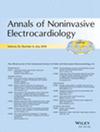Prevalence and Clinical Significance of Early Repolarization in Athletes: A Systematic Review
Abstract
Introduction
Early repolarization (ER) is an electrocardiographic pattern characterized by J-point and ST-segment elevation, frequently observed in athletes. Initially deemed benign, recent studies suggest a possible association between ER and increased risks of cardiac arrhythmias and sudden cardiac death, necessitating a thorough examination of its clinical implications in athletes.
Methods
A comprehensive literature review was conducted using MEDLINE (via PubMed) and EMBASE databases, focusing on articles related to ER in athletes. Search terms included “early repolarization,” and relevant studies were selected based on their focus on athletic populations. A total of 22 articles were included for detailed analysis.
Results
The review encompassed 22 studies with a combined total of 44,326 athletes, revealing an overall mean ER prevalence of 31.6 ± 17.6 (p < 0.001). Most common location in the inferolateral region at 32.28%. The prevalence varied significantly across studies, ranging from 7% to 89%, influenced by factors such as age, gender distribution, and athletic discipline. Male athletes exhibited a higher incidence of ER compared with females, and endurance athletes showed a greater prevalence than strength athletes.
Conclusion
ER is notably prevalent among athletes, especially males and those engaged in endurance sports. Current studies do not establish a direct association between ER and increased mortality in athletes. Further research is essential to refine risk stratification criteria and develop appropriate management strategies to ensure athlete safety while maintaining optimal performance levels.


 求助内容:
求助内容: 应助结果提醒方式:
应助结果提醒方式:


